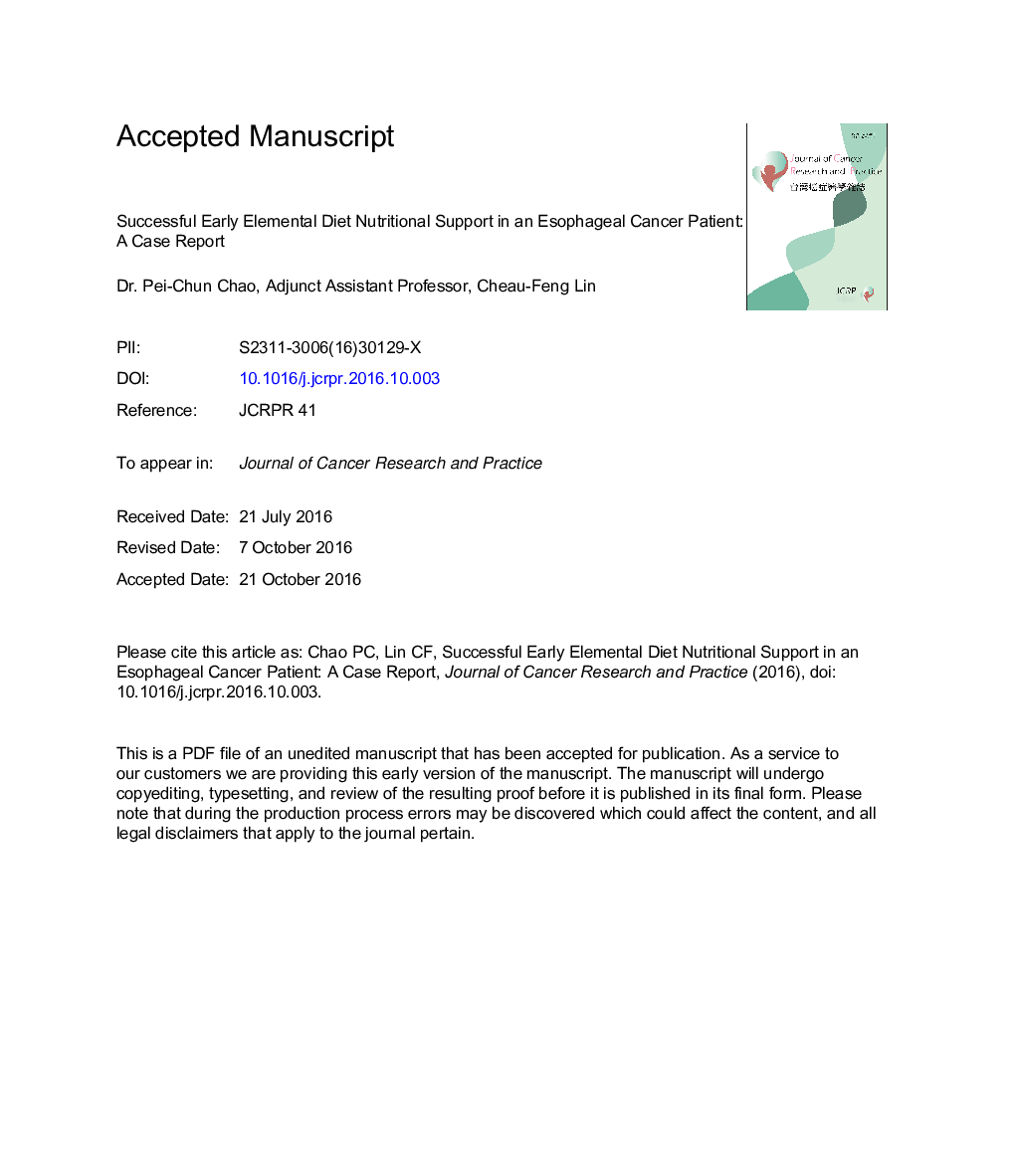| Article ID | Journal | Published Year | Pages | File Type |
|---|---|---|---|---|
| 8787421 | Journal of Cancer Research and Practice | 2017 | 20 Pages |
Abstract
Our case involved a 58-year-old man with a medical history of moderately differentiated esophageal squamous cell carcinoma. Positron emission tomography (PET) and computed tomography (CT) scan revealed a tumor in the upper two-thirds of the esophagus, with a maximal length of 14.4Â cm and at least 6 enlarged lymph nodes. Concurrent chemoradiotherapy (CCRT) was performed on June 12, 2015, and a chest CT 2 weeks later revealed partial tumor response and shrinkage of the right upper paratracheal lymph node. The patient (cT3N3MO, stage III c) underwent esophagectomy with gastric tube reconstruction, lymph node dissection, and jejunostomy on July 6, 2015. Bodyweight (BW) loss occurred because of inadequate calorie intake. The nutrition support team (NST) commenced an intervention and estimated the patient's malnutrition status from the BW loss (>8% in 3 months), body mass index (BMI, 21Â kg/m2), triceps skinfold thickness (TSF, 5.7Â mm), arm circumference (AC, 20Â cm), and serum albumin level (2.7Â g/dL). The NST administered an enteral nutrition formula with an elemental diet (Peptamen) through enterostomy feeding, and provided meals according to the patient's digestive ability. The Scored Patient-Generated Subjective Global Assessment (PG-SGA) improved from 13 to 5, and energy support increased from 10 to 30Â kcal/kg BW, with the BMI rising from 21 to 22Â kg/m2, TSF from 5.7 to 7.0Â mm, AC from 20 to 21.7Â cm, and serum albumin level from 2.7 to 3.1Â g/dL. The patient's wound healed completely.
Related Topics
Health Sciences
Medicine and Dentistry
Oncology
Authors
Pei-Chun Chao, Cheau-Feng Lin,
